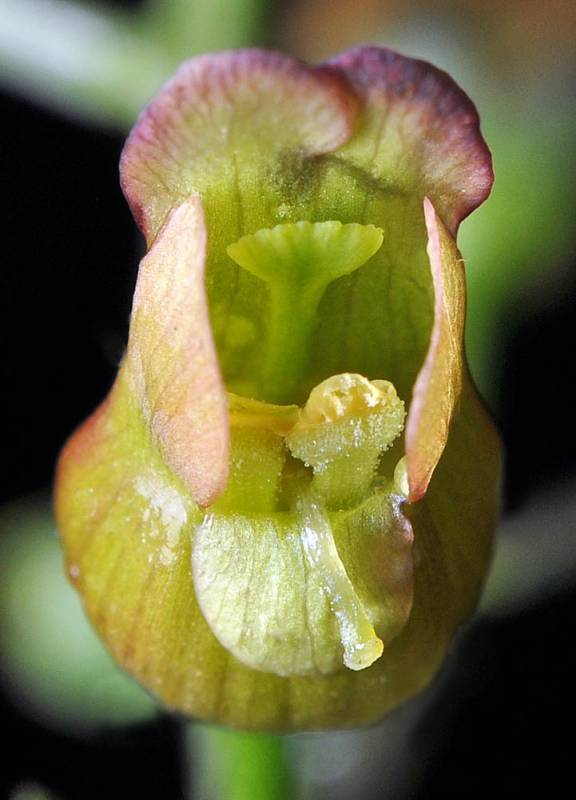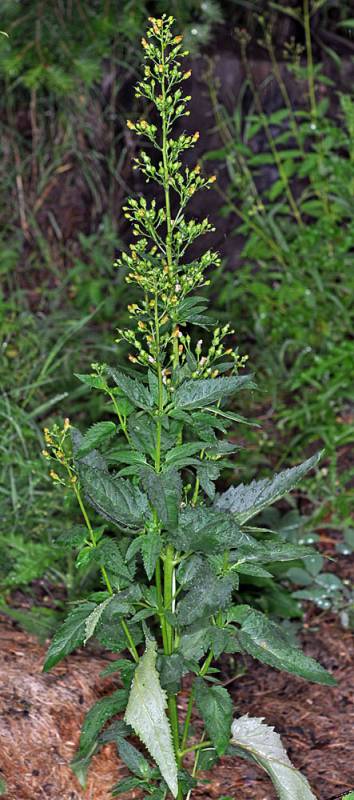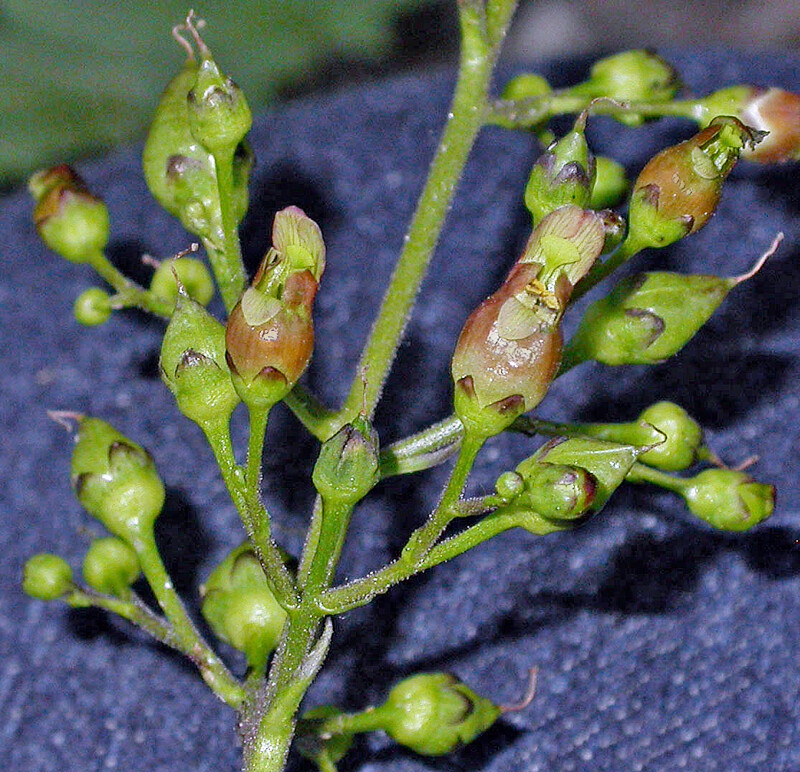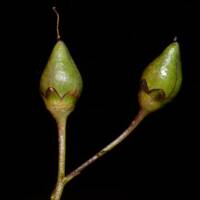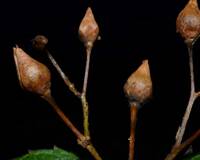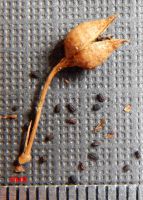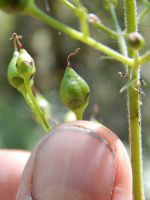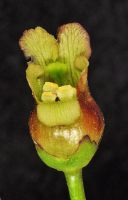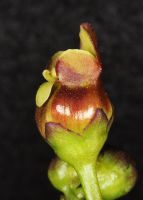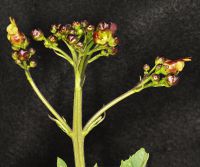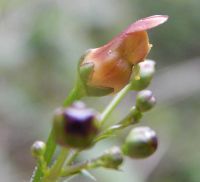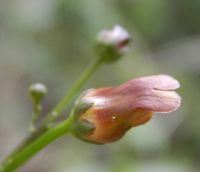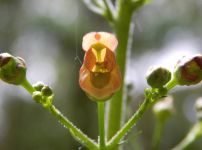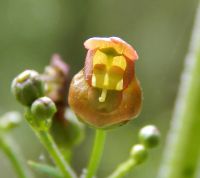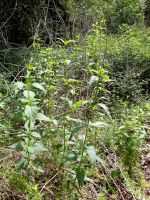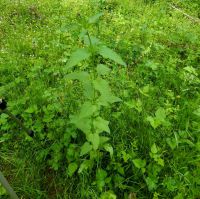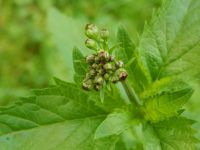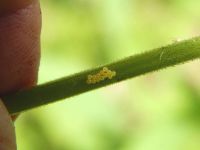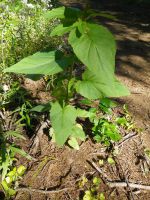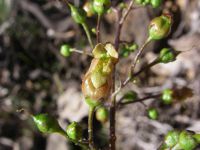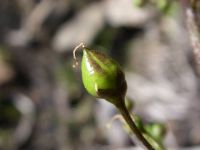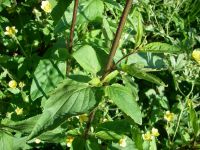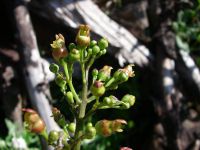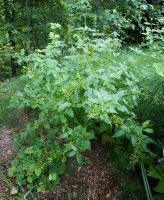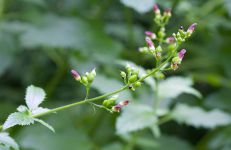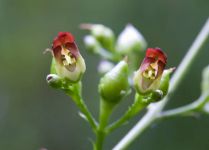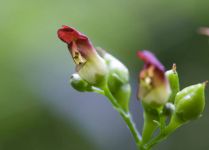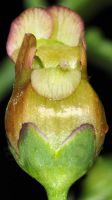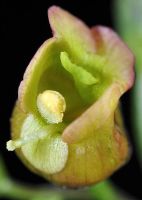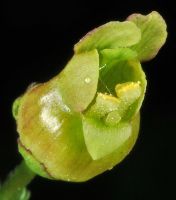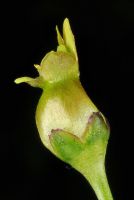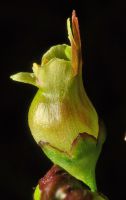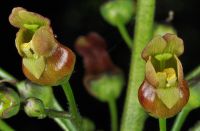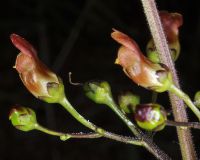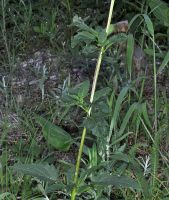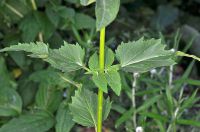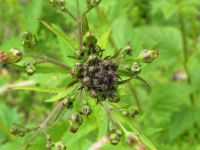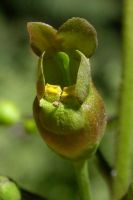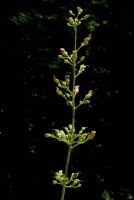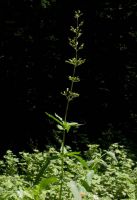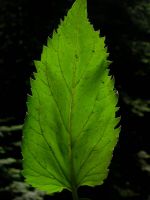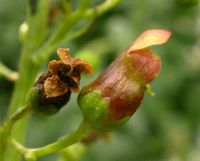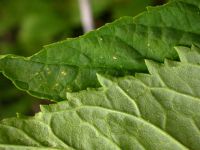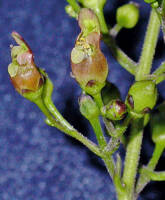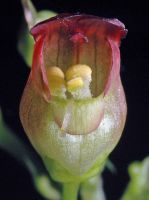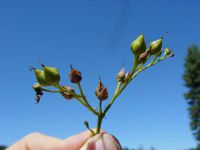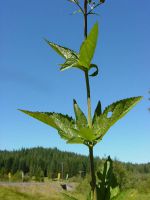Distribution: Occurring on both sides of the Cascades crest in Washington; Alaska to California, east across much of the U.S. and all of Canada to the Atlantic Coast.
Habitat: Moist forest edges and openings, and meadows at low elevations, but not along the coast.
Flowers: June-August
Origin: Native
Growth Duration: Perennial
Conservation Status: Not of concern
Pollination: Bumblebees, bees, wasps, hummingbirds
Herbaceous perennial from a thickened root, the square stems clustered, stout, 5-15 dm. tall; herbage usually covered with fine, spreading hairs, with stalked glands in the inflorescence.
Leaves opposite, all cauline, with petioles 1-3 cm. long, gradually reduced upward, the blades triangular-ovate with pointed tips and truncate bases, 5-15 cm. long and 2-7 cm. wide, sharply toothed.
Flowers numerous in a terminal, open, elongate, nearly naked inflorescence 1-5 dm. long and 3-10 cm. wide, its branches opposite; calyx 5-cleft nearly to the base, the lobes 2-3 mm. long, thin, broad and blunt; corolla 9-14 mm. long, yellowish-green, with light maroon overcast above, firm, bilabiate, the upper lip 2-lobed, flat, projecting forward, the lower lip shorter, 3-lobed, the central lobe deflexed; fertile stamens 4, the filaments expanded upward; a fifth, sterile stamen is represented by a short scale on the upper lip, yellow-green, 1-1.8 mm. wide and nearly as long
Capsule ovoid, 6-8 mm. long.
Publication: Fl. Amer. Sept. 2: 419 [1813]. 1814. 1814.
Scrophularia pectinata Raf.
PNW Herbaria: Specimen records of Scrophularia lanceolata in the Consortium of Pacific Northwest Herbaria database
WA Flora Checklist: Scrophularia lanceolata checklist entry
OregonFlora: Scrophularia lanceolata information
E-Flora BC: Scrophularia lanceolata atlas page
CalPhotos: Scrophularia lanceolata photos

